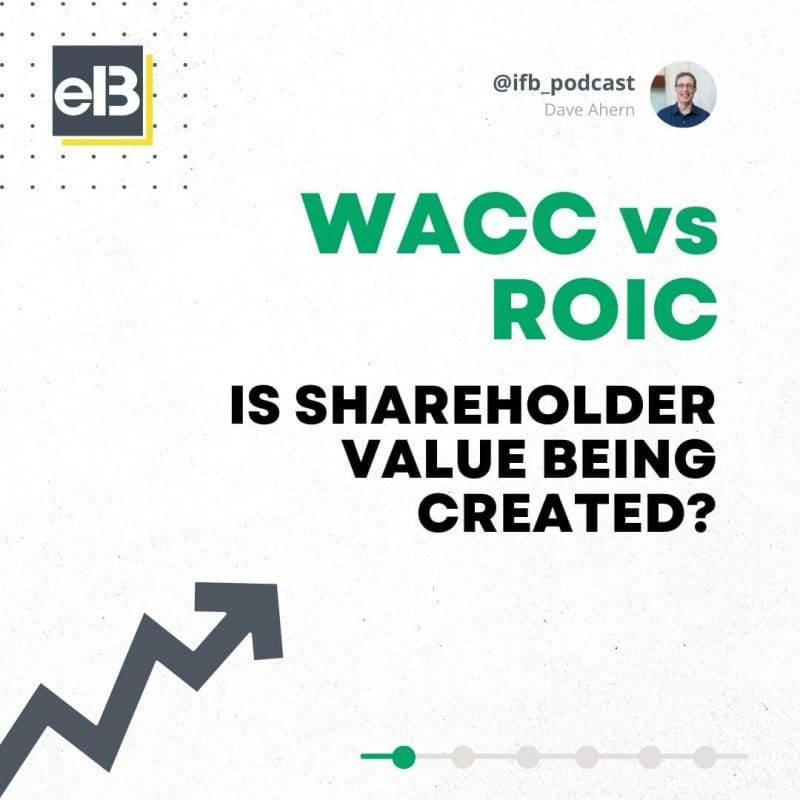Using a DCF Model to Value a Stock
Investors are inherently predicting the future. Whether with an individual stock or a basic index fund, deciding to park your savings in a financial asset means you are making a bet about the future value of that asset. Otherwise, why would you buy it? Suppose you treat stock analysis as no different than analyzing a […]
Understanding EBT, EBIT, and EBITDA: Key Financial Metrics Explained
In investing, understanding financial metrics is like having a roadmap in a complex landscape. For beginners, terms like EBT, EBIT, and EBITDA can sound like a confusing alphabet soup. In this blog post, we’ll break down these crucial metrics in an easy-to-understand way. Whether you’re a budding investor or simply curious about financial analysis, this […]
ROIC vs ROCE: When to Use One Over the Other [Pros & Cons]
Updated 8/25/2023 ROIC (Return on Invested Capital) and ROCE (Return on Capital Employed) are formulas describing how efficiently a company invests its capital. The difference between ROIC vs ROCE is subtle but powerful—basically, one (ROCE) is a shortcut of the other (ROIC). Before diving deeper, here’s the simple cliff notes: Return on Capital Employed Formula […]
Value-at-Risk (VAR) – CFA Level 2 & 3
Value-at-Risk (VAR) is a critical concept for risk and portfolio management which is often taught during CFA level II and level III. Value-at-Risk is a measure of the minimum loss expected in either dollar or percentage terms as it relates to the portfolio value. VAR is measured both over a period of time (ex. 1 […]
Invested Capital Formula: The Exact Balance Sheet Line Items to Use
Updated: 5/22/2023 Invested capital is one of the main components of the popular Return on Invested Capital, or ROIC, metric. There are two main ways to calculate Invested Capital: I will show you the EXACT line items to use for each approach. Unbelievably, you can’t find this information anywhere on the internet. In this post, […]
How to Calculate Invested Capital for ROIC (the right way)
Do you know how to calculate Invested Capital the right way? Did you know there are two different equations for the same Invested Capital formula, and they mean two different things? I’ve seen the words Invested Capital tossed around lightly many times online, and while the intentions are good, the execution is not. When Invested […]
WACC vs. ROIC: Is Shareholder Value Being Created or Destroyed?

Measuring a business’s economic moat is a challenge, but a comparison using several metrics allows us to get an economic moat idea. That comparison is the grudge match of finance, WACC vs. ROIC. Warren Buffett speaks numerous times about his fondness for companies with economic moats. His best investments, such as See’s Candies, Coca-Cola, and […]
Return on Capital Employed: Ratio for Profitability and Capital Efficiency

Updated 2/7/2024 One of Terry Smith’s investing foundations’ main pillars is investing in good companies, which he defines as companies with high returns on capital employed. For those unfamiliar with Smith, he runs Fundsmith, whose returns have almost doubled those of the S&P 500 over the last decade. Smith’s Fundsmith has investments that have averaged […]
Two Ways to Use the Retention Ratio Formula to Project Future Growth
Most companies find growth by retaining earnings (capital) in the business and reinvesting it for sustainable future returns. Using the retention ratio formula can help you project a company’s future growth potential by looking at how much the company can retain in the business. There are two main types of retention ratios which are used […]
What is a Company’s Optimal Capital Structure and What Influences It?
Updated 11/9/2023 “The first question is, is when you have capital, is it better to keep it or return it to shareholders? It’s better to return it to shareholders when you cannot create more than a dollar of value with that capital. That’s test number one. And if you pass that threshold, that you think […]
